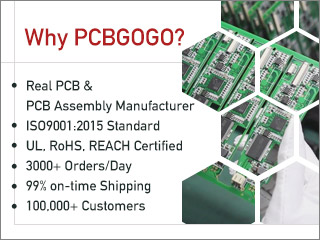Printed Circuit Boards (PCBs) are the backbone of nearly all electronic devices, from tiny wearables to powerful servers. But factors that affect the PCB price can vary a lot, and understanding why helps both makers and buyers in the electronics world.
Material Choices
What a PCB is made of plays a big role in its cost. FR-4 is the usual go-to material for most electronics—it’s a good mix of price and performance. But when things get tricky, like in high-heat car parts or devices that send high-frequency signals, fancier materials are needed. High-Tg FR-4 handles heat better than regular FR-4, and it costs more. For high-frequency jobs, Rogers substrates keep signals strong but can be way pricier than FR-4. Thicker boards also add to the cost.
Copper, which carries electricity on the board, matters too. Thicker copper (like 2 or 3 ounces) is needed for power-hungry gear, costing more than the 1-ounce copper common in gadgets. And when global copper prices go up, PCB prices often follow.
Board Complexity
How complicated the PCB is makes a difference. Simple single or double-layer boards are cheap and work for basics like toys. But add more layers—4, 6, or more—and things get pricey. Each layer needs careful alignment and bonding, requiring skilled workers and good equipment.
HDI (high-density interconnect) boards, which pack lots of parts into small spaces, are even more expensive. They have tiny connections and thin traces, made with laser drilling and other tricky processes.

Surface Finishes
The finish on the PCB’s surface isn’t just for looks—it affects how well it works and how long it lasts. OSP is a cheap option that keeps copper from rusting and ready for soldering, good for simple, low-cost gear.
Gold plating, especially hard gold, is much pricier but great for high-end stuff like aerospace or medical devices. It resists rust, conducts electricity well, and lasts a long time.
HASL is in the middle—cheaper than gold but more than OSP. It’s easy to solder to, but not great for super tiny parts because it can be uneven.
Order Size
Buying more PCBs usually means paying less per board. Small orders, like for prototypes, have higher per-unit costs because setup costs (like designing the layout or making tools) are spread over fewer boards.
Big orders spread those costs out, and factories can work more efficiently, so each board costs less. That’s why big electronics companies get better prices.
Special Needs
Extra requirements can make PCBs more expensive. Impedance control, needed for fast signals, means precise measurements and testing to keep signals strong—adding cost.
Blind and buried vias (hidden connections between layers) make boards smaller and better but require more steps to make, pushing up the price.
These days, with AI, 5G, and electric cars booming, there’s a huge demand for high-performance PCBs. These need more layers, finer details, and better materials—so they cost more.
At PCBgogo, we know how to balance cost and quality. We use our industry experience, good relationships with suppliers, and top-notch factories to figure out the best prices for each project. Whether it’s picking the right materials or optimizing production for big orders, we work with clients to meet their needs—delivering great PCBs at a fair price.


